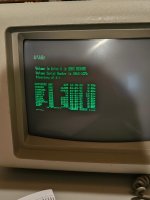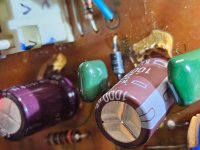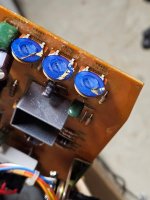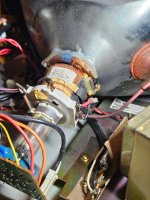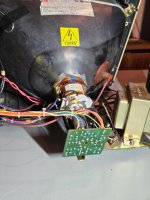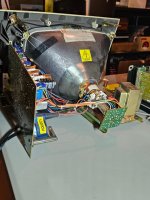stangman517
Experienced Member
Greetings all.
I recently installed a cap kit to this unit and that went well. I probably didn't need to do this, but I did even if I found out why it wasn't displaying text. I was testing it in a dead 5150 board using SuperSoft and nothing displayed, so I assumed the monitor hence the cap kit replacement. Found if the 5151 isn't receiving signal it won't display anything. What I need some help with is this. When I use a working 5150 mobo and it displays text the first few lines are nice and clear and normal 80/25 size. However as the text keeps scrolling each lines keeps getting smaller and smaller to where you have to glue your face to the monitor. I tried adjusting pots but nothing helped. Any ideas? Running MS-DOS 5.0. Thanks
I recently installed a cap kit to this unit and that went well. I probably didn't need to do this, but I did even if I found out why it wasn't displaying text. I was testing it in a dead 5150 board using SuperSoft and nothing displayed, so I assumed the monitor hence the cap kit replacement. Found if the 5151 isn't receiving signal it won't display anything. What I need some help with is this. When I use a working 5150 mobo and it displays text the first few lines are nice and clear and normal 80/25 size. However as the text keeps scrolling each lines keeps getting smaller and smaller to where you have to glue your face to the monitor. I tried adjusting pots but nothing helped. Any ideas? Running MS-DOS 5.0. Thanks

